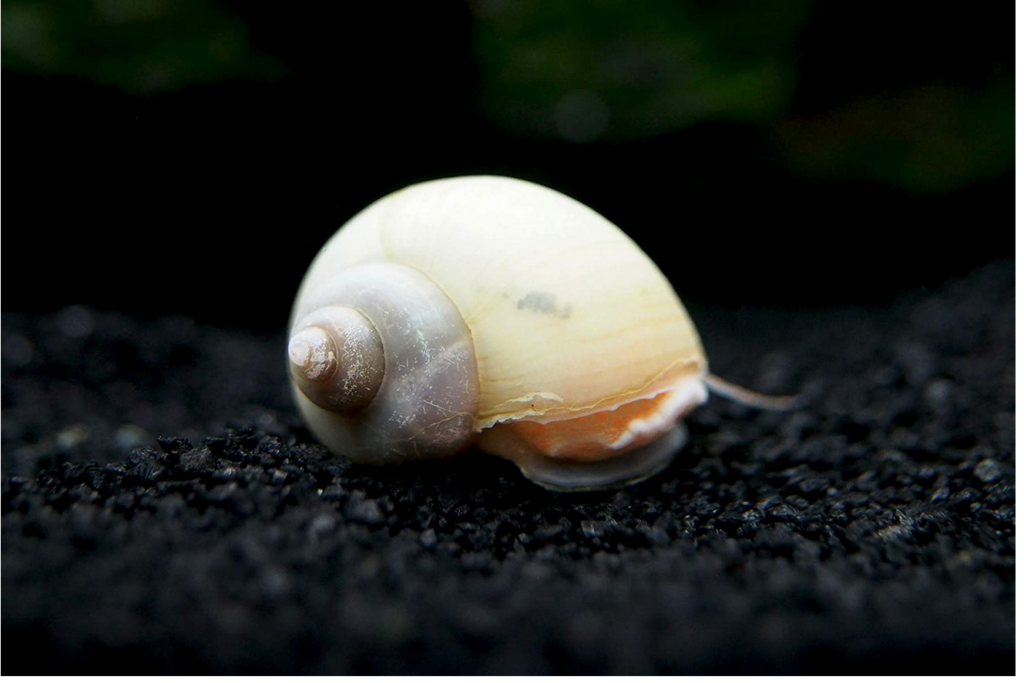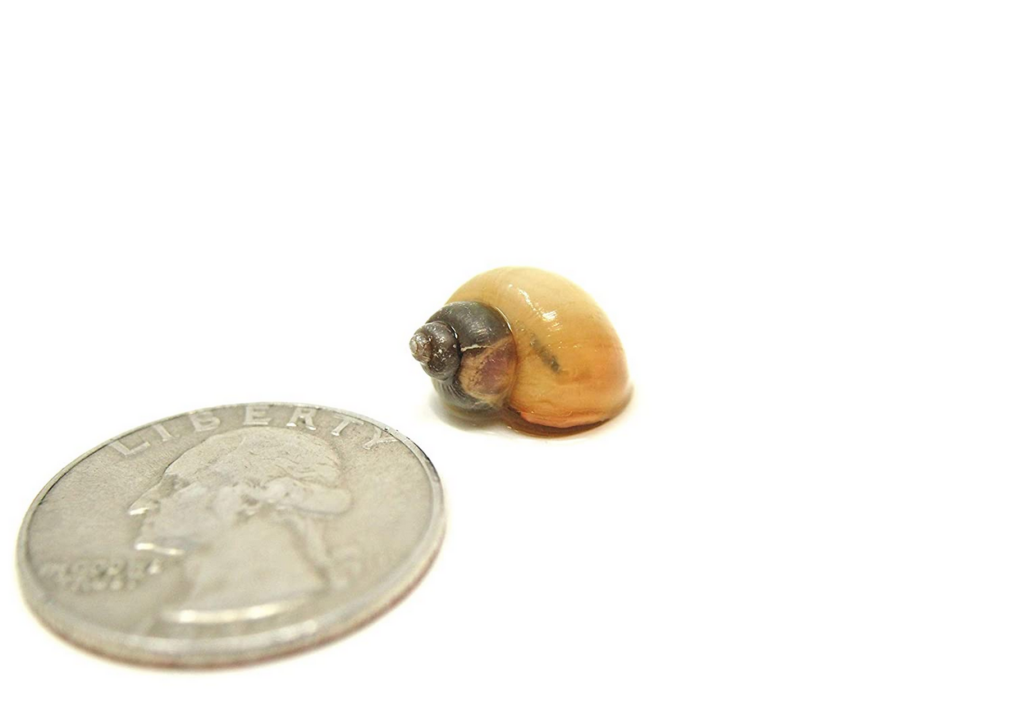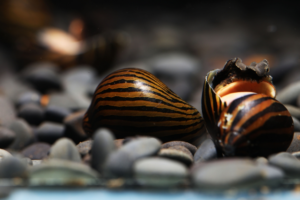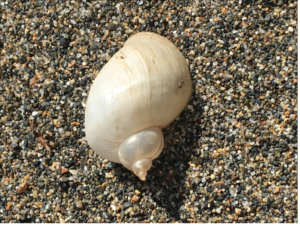Ivory snails are not only attractive but also serve as useful freshwater aquarium pets. Over time, their popularity has grown significantly, and they can now be easily found in pet stores.
The Ivory snail is a freshwater omnivore that feeds on algae and organic tank detritus. With a minimum tank size of 5 gallons (19 liters), it thrives in water temperatures of 75-86°F (24-30°C), a pH range of 7.2-7.5, and water hardness between 8-16kH.
This guide is designed to enhance your ivory snail breeding and population control skills. This guide will provide information about the origin, appearance, habitat, tank setup, tank mates, feeding, breeding, and common problems related to ivory snails.
Ivory Snail Origin and Habitat
The Ivory snail (Pomacea bridgesii) is a species of mystery snail originating from South and Central America. It is commonly found in large populations in freshwater bodies across the following regions:
- Brazil
- Uruguay
- Bolivia
- Argentina
These snails thrive in slow-moving waters with abundant vegetation, which provides them with a readily available food source.
They are often referred to as ivory-white mystery snails and belong to the Ampullariidae family, which comprises 120 species.
These snails are active day and night, constantly foraging for food in the tank. However, they have also been observed to burrow into the substrate and rest when full.
In their natural habitat, you can commonly find these snails in the following areas:
- Rivers
- Swamps
- Ponds
- Lakes
They tend to stay at the bottom of the water, where food is plentiful and have no trouble grazing even in the absence of light. This makes them active even when the tank lights are off.
Appearance and Size
Identifying an ivory snail is relatively easy. Its shell color ranges from off-white to cream, with a slight purple or yellow tint.
The head and body also have an off-white hue and orange spots on the top of the head. This unique color combination makes the snail particularly attractive when placed against a backdrop of green plants or a black substrate.
Like most other mystery snails, ivory snails have a long siphon that protrudes from the top of their head. This siphon is almost the same length as the snail and is used for breathing.
The snail will extend the siphon to the water’s surface when needing fresh air. The siphon is connected to a modified gill/lung system called a pneumostome, allowing the snail to survive in water and on land. This adaptation is especially useful in freezing conditions, as the snail relies on its modified gill system for breathing.
Ivory snails also possess two pairs of tentacles at the top of their head. The longer pair is primarily used for smell and touch, while the shorter pair is solely dedicated to smell. Below the shorter pair of tentacles, you can find a set of tiny eyes.
Additionally, these snails have an operculum, a rigid plate they use to cover their shells. A healthy operculum is sturdy and intact, while a loose or fallen operculum often indicates poor health.
In tank captivity, ivory snails can grow up to 2 inches (5 cm) in diameter and 3 inches (8 cm) in length. However, their size depends on the quality of care they receive. Well-maintained ivory snails can easily surpass these dimensions, while poorly maintained ones may struggle to reach them.
In the wild, ivory snails have been reported to grow larger than those in captivity. Abundant food sources and optimal water conditions contribute to their development, and they also experience less stress compared to their tank-dwelling counterparts.
Ivory Snail Lifespan
The lifespan of an ivory snail in captivity typically ranges from 1 to 3 years, depending on the quality of care provided. These snails reach sexual maturity at around 6 months of age.
The key factors influencing a snail’s lifespan include:
- Water quality
- Diet
- Overall health
Buying Ivory Snails
Ivory snails can be easily found and purchased in pet stores. As this can be a significant investment, it’s crucial to ensure that you acquire healthy snails that won’t cause you stress.
One important factor to consider when selecting ivory snails to purchase is their activity levels. Healthy snails will actively feed and move around the tank, exploring their surroundings for at least a few minutes.
Avoid snails that appear dormant at the tank’s bottom or that float upside down, as they are likely dead or dying.
Additionally, it’s essential to examine the health of the snail’s shell. A healthy Ivory snail should have a well-built shell without the following:
- Cracks
- Pits
- Discoloration
These signs may indicate exposure to toxic environments or a calcium deficiency.
Lastly, consider opting for smaller snails, as they are more likely to be younger. Younger snails generally have more vitality and energy. Dealing with younger snails tends to be less stressful in the long run.
I recommend purchasing ivory snails from Aquatic Arts on Amazon, which is currently available for $5.99 per snail. Aquatic Arts provide basic aquarium supplies and offer a 100% live ARRIVAL guarantee and free email support for all their plants and animals.
| Preview | Product | |
|---|---|---|

|
Aquatic Arts 1 Live Ivory Mystery Snail | Freshwater Aquarium Control / Glass Clearer | Safe in… | Check Price |
Ivory Snail Care
Tank Size
For optimal ivory snail care, it is recommended to have a minimum tank size of 2 gallons (76 liters) per snail. Therefore, if you have a group of 5 ivory snails, a 10-gallon (38-liter) tank would be necessary to provide sufficient space to move around and scavenge without overcrowding.
I recommend the Aqueon Standard Glass 10-Gallon Rectangular Tank from Amazon. This tank is durable, easy to clean, and scratch resistant. It is also reasonably priced, although it’s important to note that a heater, filter, conditioner, and lighting system must be purchased separately.
| Preview | Product | |
|---|---|---|

|
Aqueon Standard Glass 10 Gallon Rectangular Tank for Aquariums & Terrariums | Check Price |
A 20–30-gallon (76-114-liter) tank is recommended in larger community setups where ivory snails coexist with other aquatic pets.
The Oceanic Systems All Glass Aquarium AAG10021 Tank is suitable for a 20-gallon (76-liter) tank, offering high-quality glass construction for freshwater and marine applications. It is also easy to assemble and clean.
| Preview | Product | |
|---|---|---|

|
All Glass Aquarium AAG10021 Tank, 20l | Check Price |
Alternatively, for a 30-gallon tank, the SeaClear 30 Gal Show Acrylic Aquarium Combo Set is available on Amazon. This tank set includes a reflector and a lighting system.
Acrylic material provides greater strength and clarity than glass, offering improved impact resistance and reduced likelihood of cracking or chipping. It is also a safer option for households with children.
Water Parameters
The ideal water parameters for ivory snails are as shown in the table below:
| Water Parameters | Ideal Range |
| Temperature | 24-30°C (75-86°F) |
| pH | 7.2-7.5 |
| Hardness | 8-16 kH |
| Lighting | Normal community tank lighting |
Maintaining these water parameters consistently is essential for the optimal growth and development of ivory snails, as they are a sensitive species.
I recommend the SJ WAVE 7 in 1 Aquarium Test Kit from Amazon. This 7-in-1 test kit accurately measures pH, Chlorine, General Hardness, Carbonate Hardness, Nitrate, Nitrite, and Temperature in your aquarium. It provides comprehensive testing capabilities for maintaining optimal water conditions.
| Preview | Product | |
|---|---|---|

|
SJ WAVE 7 in 1 Aquarium Test Kit for Freshwater Aquarium | Fast & Accurate Water Quality Testing… | Check Price |
The Seachem Cuprisorb 100 ml copper and heavy metal removal kit is highly effective for removing copper and other heavy metals from your tank. This product offers a fast-acting solution that eliminates all traces of copper. It is user-friendly, environmentally friendly, and provides reliable results.
| Preview | Product | |
|---|---|---|

|
Seachem Cuprisorb 100ml | Check Price |
Substratum and Decorations
Due to the high activity level of ivory snails, it is important to provide them with an ideal substratum. Soft and fine sand is recommended as it is gentle on their foot and allows for easy burrowing.
Including one or two rocks and pieces of driftwood in the tank provides hiding spots and opportunities for exploration, especially in darker areas. Decorations are beneficial as they increase the surface area for algae growth and provide additional areas for ivory snails to explore.
Opting for dull decorations is ideal as they create a contrasting backdrop that enhances the snails’ colors, making them stand out more.
Aquarium Plants









Having healthy aquarium plants is beneficial for an ivory snail aquarium. These plants contribute to the overall ecosystem by increasing oxygen levels and serving as a food source for other tank inhabitants.
Although ivory snails are not typically plant eaters, you may occasionally observe them nibbling on plant leaves if hungry. Ivory snails will resort to eating plants only when they are deprived of other food sources.
Here are some recommended aquatic plants for your tank:
- Amazon Sword
- Vallisneria
- Anubias
- Java Moss
- Hornwort
- Water Sprite
- Java Fern
However, avoid overcrowding your tank with excessive decorations and vegetation, as this can impede snail movement and hinder tank cleaning. Striking a balance is key to maintaining a healthy and functional environment for your ivory snails.
Ivory Snail Feeding
Ivory snails have a good appetite. They will eat almost any organic matter that is thrown their way. They scour hard tank surfaces, cleaning algae.
Ivory snails also enjoy feeding on decaying organic matter on the tank floor. Part of this snail’s diet includes:
- Fallen plant leaves
- Dead tank mates
- Food remnants
In a community tank setup or when large snail populations are kept, supplemental feeding is necessary to ensure that snails are well-fed.
Some good supplemental foods for ivory snails include:
- Blanched vegetables (zucchini, cucumber, spinach)
- Calcium-rich foods (cuttlebone, crushed eggshells)
- Sinking pellets
- Spirulina flakes
- Snello
- Bloodworms
- Algae wafers
I recommend feeding your ivory snails once daily and removing any unconsumed food after a day. This prevents nitrogen spikes from decaying food.
Ivory Snail Breeding
Reproduction in ivory snails is a fascinating and rewarding experience to witness. This snail species reproduces sexually through cross-fertilization.
A male and female ivory snail must mate for the male to deposit sperm on the female’s gonophore. This mating takes 2-6 hours, during which the male climbs on the female up to the shoulder area where the gonophore is located.
Once in position, the male releases sperm into this pouch and carefully disengages from the female. Fertilization occurs internally, and the female lays clusters of peach-colored eggs just above the waterline.
Sometimes, the eggs are attached to hard tank surfaces to prevent them from drying out. These eggs usually hatch in 2-4 weeks, resulting in tiny ivory snails with fully formed shells. A female can lay between 10-100 eggs at a time and repeat this process every 3 months.
To enhance the breeding and the growth of ivory snail babies, ensure the following:
- Provide your snails with a calcium-rich diet.
- Ensure water parameters remain within the recommended range, as baby snails are very sensitive to water quality, and poor conditions can hinder their development.
Tank Mates
Ivory snails are peaceful and non-aggressive species that prefer to be left alone, often retreating into their shells when provoked. They can coexist with other peaceful fish and snail species in the same tank.
Consider some of these compatible tank mates:
| Fish | Snails | Small-Sized Shrimp |
| Cory Catfish | Nerite Snails | Bamboo Shrimp |
| White Cloud Mountain Minnow | Red Ramshorn Snails | Amano Shrimp |
| Pictus Catfish | Gold Inca Snails | Ghost Shrimp |
| Diamond Tetra | Ivory Snails | Red Cherry Shrimp |
| Pleco | ||
| Otocinclus Catfish |
However, certain tank mates should be avoided when keeping ivory snails:
- Cichlids
- Crayfish
- Large-sized shrimp
- Loaches
- Goldfish
- Betta fish
- Pufferfish
Ivory Snail Common Problems
Ivory snails are highly susceptible to various fish and snail diseases. Common health issues include:
- Shell rot: caused by bacterial or fungal infections resulting from poor water quality.
- Parasites: such as flukes, leeches, and nematodes.
- Shell stunt: caused by calcium deficiency.
- Bacterial infections: often associated with low water quality.
Related Reading: Can Snails Get Fish TB?
To ensure the well-being of your snails, provide them with a balanced diet, maintain a clean and stable environment, and keep them in stress-free conditions where they are not threatened.
Closing Remarks
Ivory snails are vibrant and captivating additions to freshwater aquariums and thrive with moderate care. With proper attention, these snails can flourish and live up to 3 years.
However, their rapid breeding rate can become a concern, potentially leading to invasive populations. Taking steps to regulate breeding, such as separating males and females, is important.
This guide has provided valuable insights to help you care for ivory snails effectively. Feel free to reach out if you have any recommendations or further questions.






